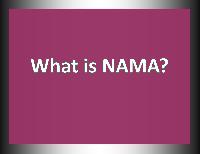
Snapshot
- NAMA refers to the trade liberalisation rules about major non-agricultural goods under WTO.
- It covers laws for trading of items like manufacturing and other industrial goods, mining, jewellery, forestry etc.
- The NAMA discussions are stalled after 2008 after differences of opinion between the emerging economies and developed countries.
- Developed countries demand higher level of tariff cutting commitments on NAMA products.
- Since the cutting of tariff require higher reduction by the developing countries who have the higher tariff rates now, progress on NAMA has been halted.
What is NAMA?
The WTO has extensive rules on trade or trade related aspects like Agriculture (AoA), Intellectual Property (TRIPs), services (GATS) etc. On manufactured items, the Non-Agricultural Market Access (NAMA) is the trade regulation. NAMA refers to all products not covered by the WTO’s agriculture and services agreements. Basically, it includes industrial goods, manufacturing products, textiles, fuels and mining products, footwear, jewellery, forestry products, fish and fisheries, and chemicals. According to the WTO, NAMA products have accounted for almost 90% of the world merchandise exports.
Aim of NAMA
According to the WTO, “The objective of NAMA is to reduce or as appropriate eliminate tariffs, including the reduction or elimination of high tariffs, tariff peaks and tariff escalation as well as Non-Tariff Barriers, in particular on products of export interest to developing countries”.
Under the Uruguay Round, the developed countries reduced their tariff on NAMA products from 6.3% to 3.8%. Developing countries increased their binding coverage (percentage of products covered) of products from 23% to 71% of the entire products that comes under NAMA. Discussions are going on about the level of tariff reduction on these commodities. Tariff binding means a country has to accept an upper ceiling on tariffs above which it cannot raise tariff.
Issues under NAMA
Amidst high tariff on manufacturing products, developed countries demand that the developing world should lower their tariffs on NAMA products. According to them, industrial tariffs in developing countries at present are much higher than those in developed countries. This is because, first, tariffs act as a protective shield for domestic industries in developing countries where there are sizable infant industries.
Developing countries argue that it is very difficult to make substantial tariff reduction because of development priorities. The developed countries of today had maintained high tariff walls during their earlier phases of development. Once they have climbed up the development ladder, the same countries are now advocating drastic tariff liberalisation for developing countries. The Developing world demanded tariff reduction by the developed countries under the Doha Development Agenda.
After the establishment of the WTO (January 1995), several attempts were made to design a formula based tariff reduction plan for the member countries in NAMA products. Several formulas have been proposed including the Swiss formula for tariff reduction. But consensus is eluding and discussions were stalled in 2008.
Developing countries would like to keep the special and differential treatment (S&D) that is incorporated under other agreements in NAMA as well in a strong way. In response, developed countries oppose granting of S&D to emerging market economies like India and China.
The differences in opinion between emerging and developed country members about the package is the main stumbling block for NAMA negotiations since 2008.
*********









